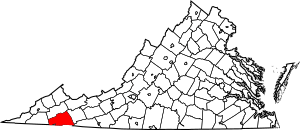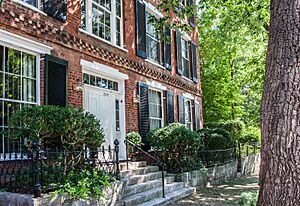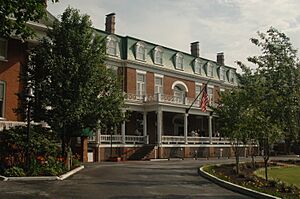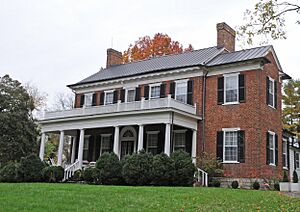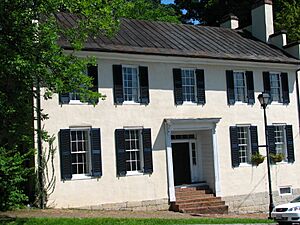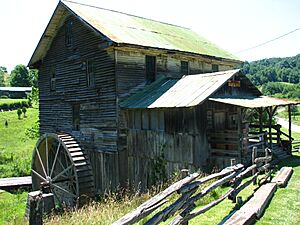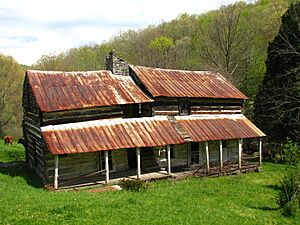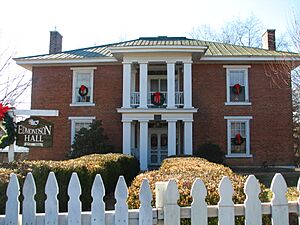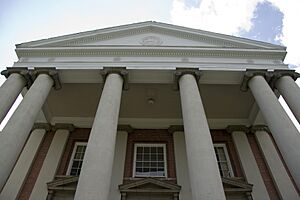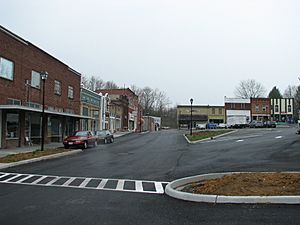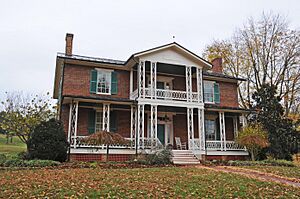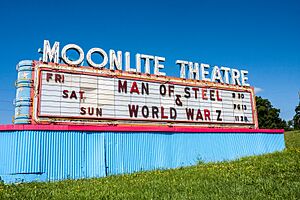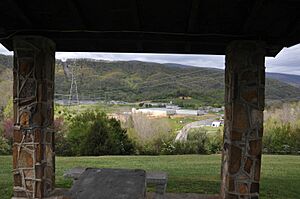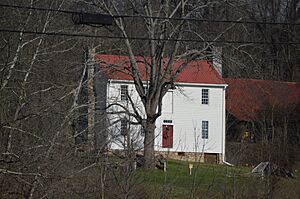National Register of Historic Places listings in Washington County, Virginia facts for kids
Hey there! Did you know that some places are so special and important that they get listed on a special list? This list is called the National Register of Historic Places. It helps protect buildings, sites, and objects that are important to American history, architecture, archaeology, engineering, or culture.
In Washington County, Virginia, there are 17 amazing places that have made it onto this list! These places are like treasures that tell us stories about the past. They include old banks, historic homes, a college, and even a drive-in movie theater. Let's explore some of them!
What is the National Register of Historic Places?
The National Register of Historic Places is like a special club for important historical sites across the United States. When a place is added to this list, it means it's recognized for its unique history or design. This helps make sure these places are preserved for future generations, like you, to learn from and enjoy.
Historic Spots in Washington County
Washington County is full of history, and many of its special places are on the National Register. Let's take a closer look at some of them.
Abingdon's Historic Treasures
The town of Abingdon, Virginia has several buildings and even a whole area that are super old and important.
Abingdon Bank
Imagine a bank that's been around for a really long time! The Abingdon Bank building, located at 225 East Main Street, was added to the list in 1969. It's a cool example of old architecture.
Abingdon Historic District
This isn't just one building; it's a whole neighborhood! The Abingdon Historic District includes many buildings along Main Street and nearby areas. It was recognized in 1970 because it shows what the town looked like long ago. Walking through it is like stepping back in time!
Baker-St. John House
The Baker-St. John House is a historic home located on Providence Road. It was added to the list in 2011, showing its importance to the area's history.
Mont Calm
Another historic house in Abingdon is Mont Calm. It was listed in 1974 and stands as a reminder of the past.
Dr. William H. Pitts House
The Dr. William H. Pitts House is another interesting building on East Main Street in Abingdon. It was added to the list in 2002.
White's Mill
Just northwest of Abingdon is White's Mill, a historic mill that was listed in 1974. Mills like this were very important long ago for grinding grain.
Historic Places in Other Towns
Washington County has many other towns with their own special historic spots.
Brook Hall
In Glade Spring, Virginia, you can find Brook Hall, a historic building listed in 1997.
Crabtree-Blackwell Farm
Near Blackwell, Virginia is the Crabtree-Blackwell Farm. This farm was added to the list in 1975, showing its importance to the area's farming history.
Edmondson Hall
Edmondson Hall is located near Meadowview, Virginia. It was listed in 1998.
Emory and Henry College
Emory, Virginia is home to Emory and Henry College, a historic college campus. The college was recognized in 1989 for its important buildings and history.
Glade Spring Commercial Historic District
Like Abingdon, Glade Spring, Virginia also has a historic district! The Glade Spring Commercial Historic District includes old shops and buildings in the town square area. It was listed in 2013.
The Grove
In Bristol, Virginia, you'll find The Grove, a historic house listed in 2002.
Moonlite Theatre
This is a really cool one! The Moonlite Theatre in Abingdon is a Drive-in theater built in 1949. It was added to the list in 2007. Imagine watching a movie under the stars from your car, just like people did decades ago!
Saltville Battlefields Historic District
Near Saltville, Virginia, there's a historic district that includes important battlefields. The Saltville Battlefields Historic District was listed in 2010 and tells the story of battles that happened there. Part of this district is also in Smyth County.
Walnut Grove
Another historic place in Bristol, Virginia is Walnut Grove, which was listed in 2004.
Why are these places important?
These historic places help us understand what life was like in the past. They show us how people lived, worked, and built things. By protecting them, we make sure that these stories and examples of history can be enjoyed and learned from by many more generations. It's like having a giant history book that you can actually walk through!


